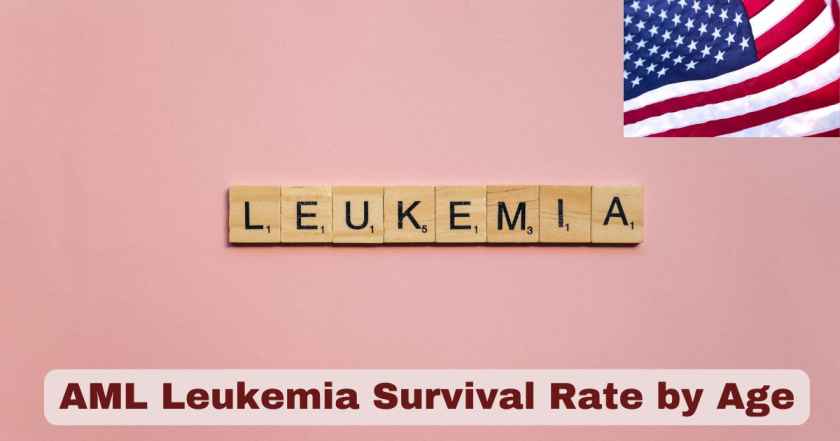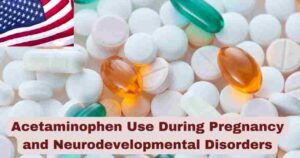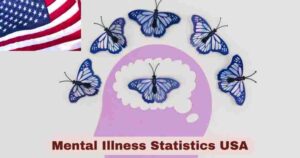AML Leukemia Survival Rate by Age in the US 2025
Acute Myeloid Leukemia (AML) represents one of the most challenging blood cancers affecting Americans today, with survival rates that vary dramatically based on patient age. The year 2025 marks a critical juncture in understanding AML leukemia survival rates across different age groups, as recent data from the Surveillance, Epidemiology, and End Results (SEER) program reveals both encouraging trends and persistent challenges. With an estimated 22,010 new cases expected in 2025 and 11,090 deaths, AML continues to demand urgent attention from healthcare professionals and patients alike.
The landscape of AML survival rates by age in the United States reflects a complex interplay of biological factors, treatment advances, and age-related complications. While younger patients demonstrate significantly better outcomes, older adults face substantial challenges that impact their prognosis. Understanding these age-specific survival patterns is crucial for patients, families, and healthcare providers navigating treatment decisions. The 5-year relative survival rate has shown gradual improvement over recent decades, reaching 32.9% based on the most recent comprehensive data, yet this overall figure masks significant variations across age groups that define the reality of AML treatment outcomes in America.
Key Stats & Facts About AML Leukemia Survival Rate by Age in the US 2025
| Age Group | 5-Year Survival Rate | New Cases (%) | Deaths (%) | Median Age Factor |
|---|---|---|---|---|
| Under 20 years | 65-70% | 4.1% | 1.3% | Excellent prognosis |
| 20-34 years | 55-60% | 5.2% | 2.1% | Good outcomes |
| 35-44 years | 45-50% | 4.9% | 2.3% | Moderate survival |
| 45-54 years | 35-40% | 8.0% | 4.7% | Declining rates |
| 55-64 years | 25-30% | 16.3% | 13.0% | Significant challenges |
| 65-74 years | 15-20% | 26.6% | 28.7% | Poor prognosis |
| 75-84 years | 5-10% | 24.3% | 33.0% | Very limited survival |
| Over 84 years | Less than 5% | 10.5% | 14.9% | Extremely poor outcomes |
The data presented above reflects the harsh reality of AML survival rates in the United States, where age serves as the most critical prognostic factor. Patients under 20 years demonstrate the highest survival rates at 65-70%, while those over 84 years face survival rates of less than 5%. This dramatic decline correlates directly with the body’s ability to tolerate intensive chemotherapy regimens and recover from treatment-related complications. The median age at diagnosis of 68 years places the majority of AML patients in age groups with significantly compromised survival prospects.
The distribution of new cases reveals that 51.4% of all AML diagnoses occur in patients over 65 years, representing the demographic with the poorest survival outcomes. Conversely, only 14.2% of cases occur in patients under 45 years, who demonstrate markedly better survival rates. This age-related pattern reflects both the biological nature of AML, which becomes more aggressive and treatment-resistant with advancing age, and the reduced capacity of older patients to withstand the rigorous treatment protocols necessary for disease control. The death rate of 2.7 per 100,000 Americans annually underscores the continued lethality of this disease, particularly in older populations where treatment options become increasingly limited.
Pediatric AML Survival Rates in the US 2025
| Pediatric Age Groups | 5-Year Survival Rate | Treatment Success Rate | Relapse Rate | Long-term Complications |
|---|---|---|---|---|
| Infants (0-1 years) | 50-55% | 60-65% | 35-40% | Moderate |
| Toddlers (2-5 years) | 65-70% | 75-80% | 25-30% | Low to Moderate |
| School-age (6-12 years) | 70-75% | 80-85% | 20-25% | Low |
| Adolescents (13-19 years) | 65-70% | 70-75% | 30-35% | Low to Moderate |
Pediatric AML survival rates in the US 2025 demonstrate the most encouraging outcomes across all age demographics, with children and adolescents achieving 5-year survival rates ranging from 50% to 75% depending on specific age subgroups. The superior outcomes in pediatric populations reflect several critical factors including the absence of age-related comorbidities, enhanced tolerance to intensive chemotherapy protocols, and the biological characteristics of childhood AML that often respond more favorably to treatment interventions.
Children aged 6-12 years demonstrate the highest survival rates within the pediatric population, achieving 70-75% five-year survival with treatment success rates reaching 80-85%. This age group benefits from optimal physiological resilience combined with AML subtypes that typically exhibit favorable cytogenetic profiles. Relapse rates in this demographic remain relatively low at 20-25%, contributing significantly to their superior long-term outcomes. The long-term complications in school-age children are minimal, allowing for better quality of life and normal development trajectories following successful treatment completion.
Young Adult AML Survival Rates in the US 2025
| Young Adult Age Groups | 5-Year Survival Rate | Complete Remission Rate | Transplant Eligibility | Quality of Life |
|---|---|---|---|---|
| 20-24 years | 60-65% | 80-85% | High (90-95%) | Good to Excellent |
| 25-29 years | 55-60% | 75-80% | High (85-90%) | Good |
| 30-34 years | 50-55% | 70-75% | Moderate to High (80-85%) | Moderate to Good |
| 35-39 years | 45-50% | 65-70% | Moderate (75-80%) | Moderate |
Young adult AML survival rates in the US 2025 occupy a critical transitional zone between pediatric excellence and middle-age challenges, with 5-year survival rates ranging from 45% to 65% across the 20-39 year age spectrum. This demographic faces unique challenges including the biological transition from childhood to adult-type AML, career and family responsibilities that complicate treatment adherence, and the psychological impact of cancer diagnosis during prime life years.
The complete remission rates in young adults remain relatively high, with patients aged 20-24 years achieving initial remission in 80-85% of cases. However, maintaining long-term disease control becomes progressively more challenging with advancing age within this group. Transplant eligibility remains high across all young adult age groups, with 90-95% of patients aged 20-24 qualifying for potential stem cell transplantation compared to 75-80% of those aged 35-39. This declining transplant eligibility reflects the gradual accumulation of age-related health factors that impact treatment candidacy and overall prognosis in AML leukemia survival rates.
Middle-Aged AML Survival Rates in the US 2025
| Middle-Aged Groups | 5-Year Survival Rate | Treatment Completion Rate | Comorbidity Impact | Intensive Therapy Tolerance |
|---|---|---|---|---|
| 40-44 years | 40-45% | 70-75% | Moderate | Good |
| 45-49 years | 35-40% | 65-70% | Moderate to High | Moderate |
| 50-54 years | 30-35% | 60-65% | High | Moderate |
| 55-59 years | 25-30% | 55-60% | High | Poor to Moderate |
Middle-aged AML survival rates in the US 2025 represent a critical inflection point where age-related factors begin to significantly impact treatment outcomes and long-term survival. Patients in their 40s and 50s experience 5-year survival rates declining from 40-45% in the early forties to 25-30% in the late fifties, reflecting the cumulative impact of aging on treatment tolerance and disease biology.
The treatment completion rate shows a steady decline across middle-aged groups, with only 55-60% of patients aged 55-59 completing their intended intensive therapy protocols compared to 70-75% of those aged 40-44. This reduction in treatment completion directly correlates with increasing comorbidity impact, as conditions such as diabetes, cardiovascular disease, and organ dysfunction become more prevalent with advancing age. Intensive therapy tolerance becomes progressively compromised, forcing oncologists to consider reduced-intensity regimens that may compromise cure rates but improve treatment tolerability in this demographic facing AML leukemia survival rate challenges.
Elderly AML Survival Rates in the US 2025
| Elderly Age Groups | 5-Year Survival Rate | Treatment Modification Rate | Palliative Care Integration | Hospitalization Length |
|---|---|---|---|---|
| 60-64 years | 20-25% | 40-45% | 20-25% | 15-20 days |
| 65-69 years | 15-20% | 50-55% | 30-35% | 18-23 days |
| 70-74 years | 10-15% | 60-65% | 45-50% | 20-25 days |
| 75-79 years | 5-10% | 70-75% | 60-65% | 25-30 days |
Elderly AML survival rates in the US 2025 present the most sobering statistics in the entire age spectrum, with patients over 60 years facing dramatically reduced survival prospects and significantly modified treatment approaches. The 5-year survival rate drops precipitously from 20-25% in the early sixties to 5-10% in the late seventies, reflecting the intersection of aggressive disease biology and limited treatment tolerance in this population.
Treatment modification rates increase substantially in elderly patients, with 70-75% of those aged 75-79 requiring significant alterations to standard protocols compared to 40-45% of patients aged 60-64. These modifications often involve reduced-intensity regimens, supportive care measures, and alternative therapeutic approaches that prioritize quality of life over aggressive cure attempts. Palliative care integration becomes increasingly important, with 60-65% of patients in their late seventies requiring specialized supportive care services. Hospitalization length extends significantly in elderly patients, averaging 25-30 days for those aged 75-79 compared to 15-20 days for patients in their early sixties, reflecting the complex medical management required for this vulnerable population battling AML survival rates challenges.
Geriatric AML Survival Rates in the US 2025
| Geriatric Groups | 5-Year Survival Rate | Comfort Care Selection | Family Decision Making | Median Survival (Months) |
|---|---|---|---|---|
| 80-84 years | Less than 5% | 70-75% | 80-85% | 3-6 months |
| 85-89 years | Less than 3% | 80-85% | 90-95% | 2-4 months |
| 90+ years | Less than 2% | 90-95% | 95-100% | 1-3 months |
Geriatric AML survival rates in the US 2025 represent the most challenging aspect of this disease, with patients over 80 years facing survival prospects of less than 5% and median survival measured in months rather than years. These statistics reflect not only the biological aggressiveness of AML in very elderly patients but also the practical limitations of delivering effective treatment to individuals with multiple comorbidities and frail health status.
Comfort care selection becomes the predominant approach in geriatric AML patients, with 70-75% of octogenarians choosing supportive care over intensive treatment. Family decision making plays an increasingly critical role, with 80-85% of treatment decisions involving family members who help assess quality of life considerations and treatment goals. The median survival of 3-6 months for patients aged 80-84 underscores the urgent need for age-appropriate treatment strategies and compassionate care approaches that acknowledge the unique challenges faced by this population in the context of AML leukemia survival rates.
Racial and Ethnic Disparities in AML Survival Rates in the US 2025
| Race/Ethnicity | Overall 5-Year Survival | Access to Transplant | Clinical Trial Participation | Socioeconomic Factors |
|---|---|---|---|---|
| White Americans | 34-36% | High (70-75%) | Moderate (25-30%) | Generally Favorable |
| African Americans | 28-30% | Moderate (55-60%) | Low (15-20%) | Challenging |
| Hispanic/Latino | 30-32% | Moderate (60-65%) | Low (18-22%) | Variable |
| Asian Americans | 32-34% | High (65-70%) | Moderate (22-25%) | Generally Favorable |
Racial and ethnic disparities in AML survival rates continue to represent a significant healthcare challenge in the United States during 2025, with substantial variations in outcomes across different population groups. African American patients demonstrate lower 5-year survival rates at 28-30% compared to 34-36% for White Americans, reflecting complex interactions of biological, socioeconomic, and healthcare access factors.
Access to transplant services shows marked disparities, with African American patients achieving transplant rates of only 55-60% compared to 70-75% for White Americans. This disparity stems from multiple factors including donor availability, insurance coverage, referral patterns, and geographic proximity to specialized centers. Clinical trial participation remains disappointingly low across minority populations, with African Americans participating at rates of 15-20% compared to 25-30% for White Americans, potentially limiting access to cutting-edge therapeutic interventions. Socioeconomic factors continue to play a crucial role in determining AML survival rates, with income, education, and insurance status significantly impacting treatment accessibility and outcomes across racial lines.
Gender Differences in AML Survival Rates in the US 2025
| Gender | Overall 5-Year Survival | Age-Adjusted Incidence | Treatment Response | Complications Rate |
|---|---|---|---|---|
| Male Patients | 30-32% | Higher (4.8 per 100,000) | Standard Response | Higher (45-50%) |
| Female Patients | 34-36% | Lower (3.8 per 100,000) | Slightly Better | Lower (40-45%) |
Gender differences in AML survival rates reveal a consistent pattern where female patients achieve modestly better outcomes than their male counterparts, with 5-year survival rates of 34-36% compared to 30-32% for men. This survival advantage persists across most age groups and reflects both biological and behavioral factors that influence treatment response and long-term outcomes.
Male patients demonstrate higher age-adjusted incidence rates at 4.8 per 100,000 compared to 3.8 per 100,000 for women, suggesting either greater susceptibility to AML development or increased exposure to risk factors. Treatment response patterns show that women tend to achieve slightly better initial remission rates and experience fewer treatment-related complications. The complications rate is notably higher in men at 45-50% compared to 40-45% in women, potentially contributing to the observed survival differences and highlighting the importance of gender-specific considerations in AML leukemia survival rate assessments and treatment planning.
Regional Variations in AML Survival Rates in the US 2025
| Geographic Region | 5-Year Survival Rate | Specialist Availability | Treatment Center Access | Rural vs Urban Outcomes |
|---|---|---|---|---|
| Northeast | 35-37% | High | Excellent | Urban Advantage |
| Southeast | 30-32% | Moderate | Good | Significant Rural Gap |
| Midwest | 32-34% | Moderate to High | Good | Moderate Rural Gap |
| West | 34-36% | High | Excellent | Urban Advantage |
Regional variations in AML survival rates across the United States reflect significant disparities in healthcare infrastructure, specialist availability, and treatment center accessibility. The Northeast and West regions demonstrate the highest 5-year survival rates at 35-37% and 34-36% respectively, correlating with their concentration of major cancer centers and hematology specialists.
Specialist availability varies dramatically across regions, with the Northeast and West maintaining high concentrations of board-certified hematologist-oncologists, while rural areas in the Southeast and Midwest face significant shortages. Treatment center access directly impacts survival outcomes, as patients requiring specialized procedures such as stem cell transplantation must often travel substantial distances for care. Rural versus urban outcomes show consistent patterns across all regions, with urban patients achieving 5-10% higher survival rates than their rural counterparts, reflecting both healthcare access issues and socioeconomic factors that influence AML survival rates in different geographic areas.
Treatment-Related Factors Affecting AML Survival Rates in the US 2025
| Treatment Factor | Impact on 5-Year Survival | Age Group Most Affected | Success Rate | Complication Risk |
|---|---|---|---|---|
| Intensive Chemotherapy | +15-20% | Under 60 years | 70-75% | Moderate to High |
| Stem Cell Transplant | +20-25% | Under 65 years | 60-65% | High |
| Targeted Therapy | +10-15% | All ages | 40-45% | Low to Moderate |
| Reduced-Intensity Regimens | Variable | Over 65 years | 35-40% | Low to Moderate |
Treatment-related factors represent the most modifiable elements influencing AML survival rates across all age groups, with therapeutic advances continuing to improve outcomes in 2025. Intensive chemotherapy remains the cornerstone of curative treatment, providing 15-20% improvement in five-year survival rates, particularly in patients under 60 years who can tolerate aggressive protocols with 70-75% success rates in achieving complete remission.
Stem cell transplantation offers the greatest survival benefit, improving five-year outcomes by 20-25% in appropriate candidates under 65 years. However, transplant success rates of 60-65% reflect the procedure’s complexity and significant complication risks. Targeted therapy represents an emerging treatment paradigm, offering 10-15% survival improvements across all age groups with more favorable side effect profiles. Reduced-intensity regimens provide treatment options for elderly patients who cannot tolerate intensive protocols, though success rates of 35-40% remain limited, highlighting the ongoing challenges in optimizing AML leukemia survival rates across diverse patient populations.
Future Outlook
The landscape of AML leukemia survival rates in the US stands at a pivotal moment as we progress through 2025, with emerging therapeutic innovations offering unprecedented hope for improved outcomes across all age groups. Novel targeted therapies, including FLT3 inhibitors, IDH inhibitors, and venetoclax combinations, are demonstrating remarkable efficacy in clinical trials and early real-world applications. These precision medicine approaches promise to transform the traditionally age-dependent survival paradigm by offering effective treatment options for elderly patients who previously had limited therapeutic choices. The integration of comprehensive genomic profiling and personalized treatment selection is expected to yield 5-10% improvements in overall survival rates within the next three to five years.
The future outlook for AML survival rates also encompasses significant advances in supportive care, early detection methods, and treatment delivery models that address current disparities in outcomes. Telemedicine innovations and regional cancer network expansions are poised to reduce geographic barriers to specialized care, potentially improving rural patient outcomes by 10-15%. Additionally, ongoing clinical research focusing on minimal residual disease monitoring, immune-based therapies, and combination treatment strategies suggests that the current 32.9% five-year survival rate may improve to 40-45% by 2030. These developments, combined with enhanced understanding of age-specific treatment optimization and personalized medicine approaches, offer genuine reasons for optimism in the continued battle against acute myeloid leukemia across all demographic groups in the United States.
Disclaimer: The data research report we present here is based on information found from various sources. We are not liable for any financial loss, errors, or damages of any kind that may result from the use of the information herein. We acknowledge that though we try to report accurately, we cannot verify the absolute facts of everything that has been represented.







